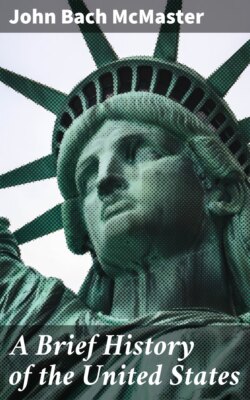Читать книгу A Brief History of the United States - John Bach McMaster - Страница 13
На сайте Литреса книга снята с продажи.
SUMMARY
Оглавление1. The voyage of Columbus led to many other voyages, prompted chiefly by a hope of finding gold. They resulted in the exploration of the coast of America, and may be grouped according to the parts explored, as follows:—
2. The Atlantic coast of North America was explored (1497–1535) by Cabot (for England)—from Newfoundland to South Carolina. Ponce de Leon (for Spain)—peninsula of Florida. Verrazano (for France)—from North Carolina to Newfoundland. Cartier (for France)—Gulf of St. Lawrence.
3. The Gulf and Caribbean coasts of North America were explored (1502- 1528) for Spain by Columbus—Central America. Ponce de Leon—west coast of Florida. Pineda—from Florida to Mexico. Narvaez expedition—from Florida to Texas.
4. The Atlantic coast of South America was explored (1498–1520) by Columbus—mouth of the Orinoco. Other explorers for Spain—whole northern coast. Cabral (for Portugal)—part of eastern coast. Vespucius (for Portugal)—eastern coast nearly to the Plata River. Magellan (for Spain)—to the Strait of Magellan.
5. The Pacific coast of America was explored (1513–1542) for Spain by Balboa—part of Panama. Magellan—part of the southwest coast. Pizarro (note, p. 23)—from Panama to Peru. Cabrillo (note, p. 28)—from Mexico up the coast of California.
6. The Spaniards early established colonies in the West Indies, South America, and Mexico; but fifty years after Columbus's discovery there was no settlement of Europeans in the mainland part of the United States. Several Spanish expeditions, however, had explored (1534–1542) large parts of the interior:—Cabeza de Vaca and his companions walked from Texas to western Mexico, Coronado wandered from Mexico to Kansas. De Soto wandered from Florida beyond the Mississippi River.
